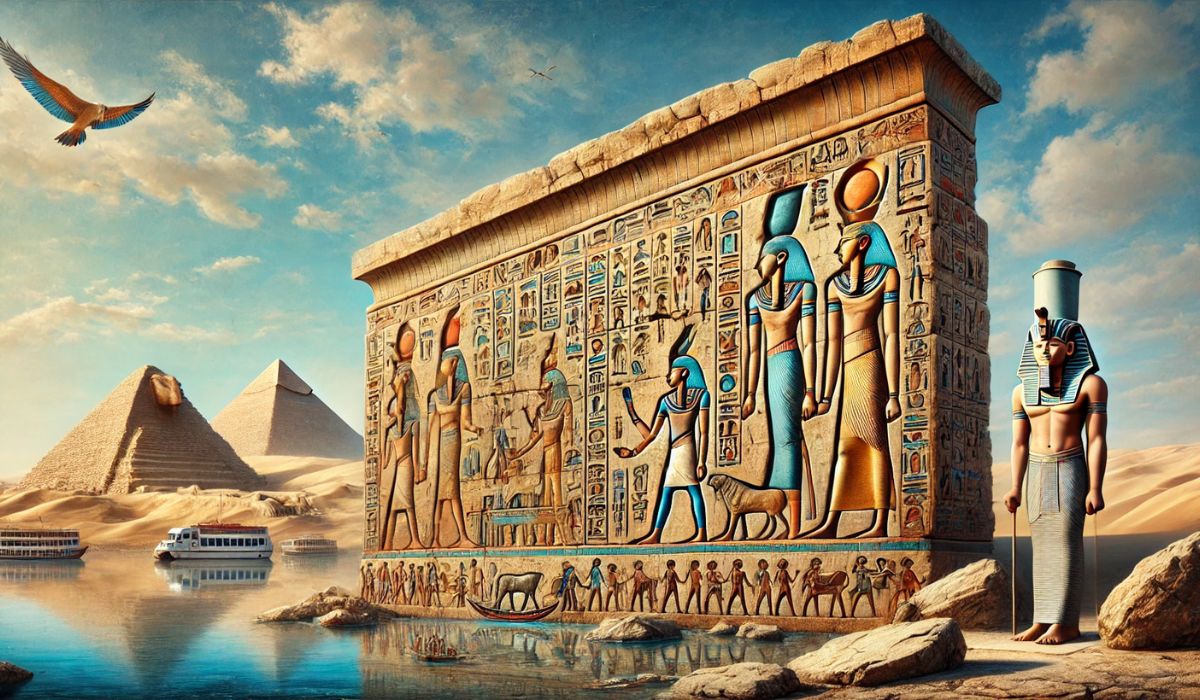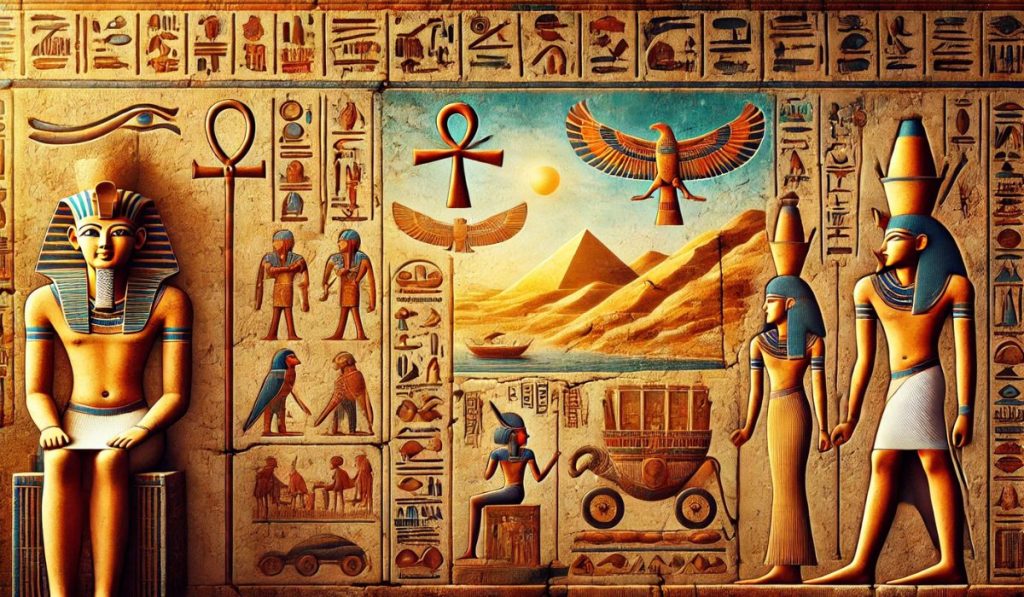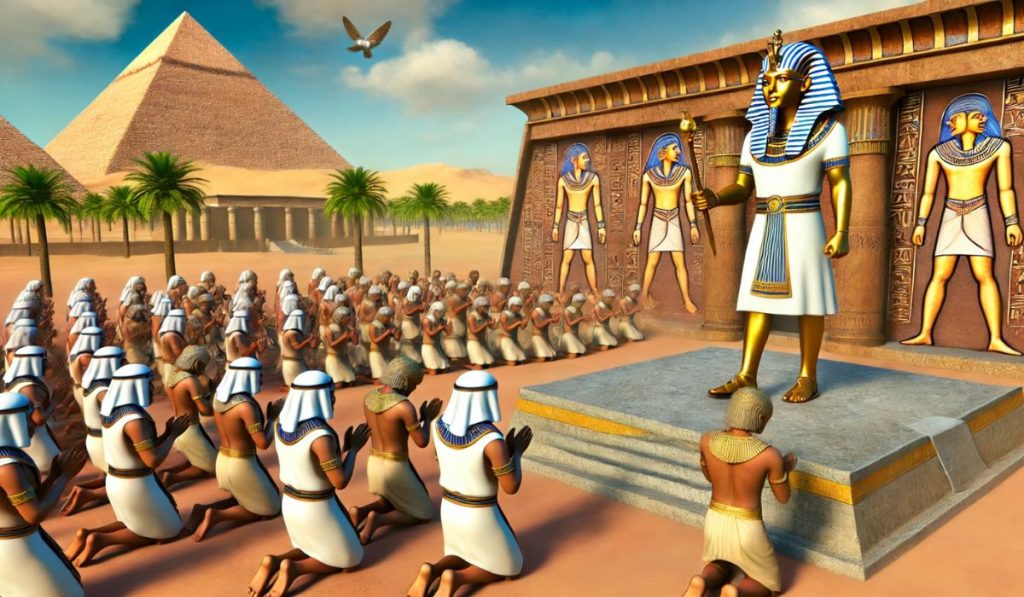Ancient artz in Egypt offers a captivating glimpse into a civilization that thrived over 4,000 years ago along the Nile River. From grand pyramids and intricate tomb paintings to the exquisite gold masks of pharaohs, Egyptian art was deeply intertwined with their beliefs, social hierarchy, and daily life. This article explores the unique characteristics, materials, and purposes of Egyptian art, unraveling the mysteries behind one of the world’s most iconic ancient civilizations.
The Purpose of Ancient Egyptian Art: More Than Aesthetics
Egyptian art was not created merely for decoration; it served specific religious, political, and social purposes. Art was an essential means of communicating religious beliefs and practices, celebrating gods, and ensuring a place for individuals in the afterlife. Whether through monumental statues or detailed wall paintings, art connected the living with the divine, bridging worlds in a powerful visual language.
The Egyptians also used art as a tool of political expression. Pharaohs, considered gods on earth, commissioned massive structures adorned with symbolic imagery to convey their authority. This visual language, rich with hieroglyphs and divine symbols, underscored the divine right of kingship and projected the power and permanence of their rule.
Unique Characteristics of Ancient Artz
Symbolic Representation
Egyptian art was highly symbolic, often using specific colors, gestures, and motifs to convey deeper meanings. For instance, the color green symbolized rebirth and fertility, while black represented the fertile Nile soil and life. Figures were depicted in a unique combination of profile and frontal views, known as “composite view,” designed to show each body part most clearly and recognizably.
Consistent Style Over Millennia
Egyptian art maintained a remarkably consistent style throughout its history, focusing on symmetry, balance, and order. This consistency reflects the Egyptians’ desire for order and stability, essential values in their culture. This approach to art gave it a timeless quality, with little variation over centuries, emphasizing continuity and tradition over individual expression.
Hierarchical Proportions
In Egyptian art, size conveyed importance. Pharaohs and gods were depicted on a larger scale than common people to signify their superior status. This use of hierarchical proportion ensured that viewers could immediately recognize the significance of figures within the artwork.
Materials and Techniques in Egyptian Art
The materials and techniques used by Egyptian artists were closely tied to the geography and resources of the Nile Valley. Artists utilized locally available materials, including limestone, sandstone, copper, and gold, reflecting Egypt’s wealth and resources.
Stone Carving and Sculpture
Stone was a favored medium for Egyptian sculptures and monuments due to its durability. Statues, tombs, and temples were often carved from limestone, granite, and sandstone. Each statue was meticulously carved with tools made of copper or harder stones, and then polished to create a smooth finish. Large statues, like those of the Great Sphinx of Giza, were created as symbols of pharaonic power, with inscriptions that often provided insights into the pharaoh’s achievements and lineage.
Wall Paintings and Reliefs
Inside temples and tombs, walls were adorned with vivid paintings and intricate reliefs. Artists used mineral-based pigments made from ochre, malachite, and other natural materials to create enduring colors. Tomb paintings depicted scenes from the deceased’s life, daily activities, and offerings to gods, ensuring that these actions would continue in the afterlife. The attention to detail and use of layered perspective brought scenes to life, revealing a vibrant society with a strong belief in life beyond death.
Metalwork and Jewelry
Egyptian artisans crafted exquisite jewelry from gold, silver, and semi-precious stones. Jewelry was not only ornamental but also served as a spiritual symbol. Amulets, for example, were worn to provide protection and blessings from the gods. The famous gold mask of Tutankhamun, inlaid with lapis lazuli and other stones, showcases the intricate metalworking skills and reverence for the pharaohs.
Religious and Symbolic Themes in Egyptian Art
Religious themes dominate Egyptian art, as much of the art was created for tombs, temples, and monuments dedicated to gods and the afterlife. Gods and goddesses were often depicted with unique attributes—such as Horus with a falcon head or Anubis with a jackal head—allowing people to instantly recognize their divine figures.
Belief in the afterlife was central to Egyptian culture. Tomb art served to prepare the deceased for the journey to the afterlife. Paintings illustrated daily activities and offerings, depicting a life of abundance and prosperity in the afterlife. Texts such as the Book of the Dead included spells and instructions to guide the deceased through the dangers of the underworld.
Pharaohs were seen as divine figures, intermediaries between gods and humans. Temples and statues were dedicated to them, celebrating their divine attributes and immortalizing their rule. Massive statues, like those of Ramses II at Abu Simbel, not only honored the pharaoh but also showcased his power to anyone entering Egypt.
Egyptian mythology was also richly represented in art. Stories of gods like Osiris, Isis, and Horus were depicted on temple walls, illustrating tales of love, betrayal, and resurrection that shaped the Egyptian worldview. These depictions helped to reinforce cultural values and beliefs, providing visual narratives for the society to pass down through generations.
The Legacy of Ancient Egyptian Art
Ancient Egyptian art has had a lasting influence on subsequent art and architecture. Its strict forms, use of scale, and symbolic motifs have inspired artists and architects across centuries, from the Roman Empire to the Art Deco movement in the 20th century. Today, Egyptian art continues to captivate the world, drawing millions to museums and archaeological sites each year.
The Rosetta Stone, discovered in 1799, was instrumental in unlocking the secrets of Egyptian hieroglyphs, allowing historians and archaeologists to translate and better understand Egyptian art and culture. This discovery reintroduced the world to the wonders of ancient Egypt, sparking an ongoing fascination with its art and mysteries.
Conclusion: Unraveling the Mysteries
Ancient Egyptian art is more than an aesthetic expression; it’s a historical record that reflects the beliefs, values, and aspirations of a remarkable civilization. Through statues, paintings, and inscriptions, the ancient Egyptians left a legacy that continues to inspire and mystify us. Each artifact offers a window into the past, revealing a society devoted to order, reverence for the divine, and a profound belief in life after death.
As we continue to explore and study these treasures, we come closer to understanding the people of ancient Egypt and their unique perspective on existence. Whether you’re fascinated by the pyramids, intrigued by hieroglyphs, or drawn to the colorful scenes on tomb walls, ancient Egyptian art provides a timeless journey into the heart of the Nile Valley and the lives of those who once flourished along its banks.



